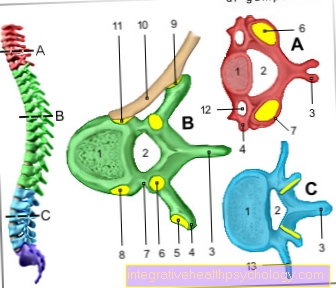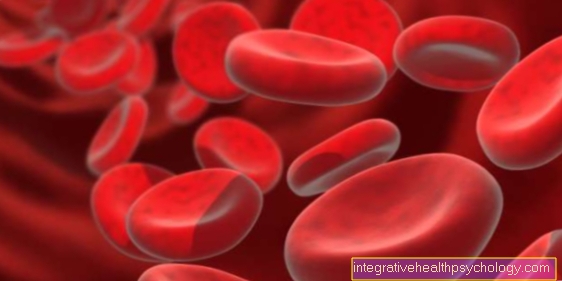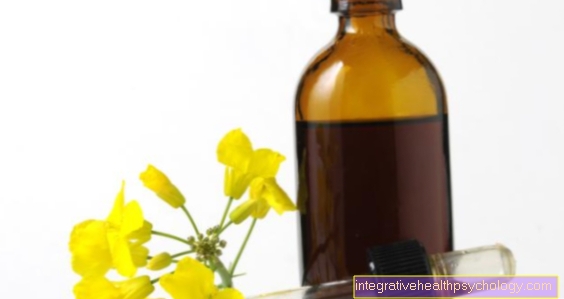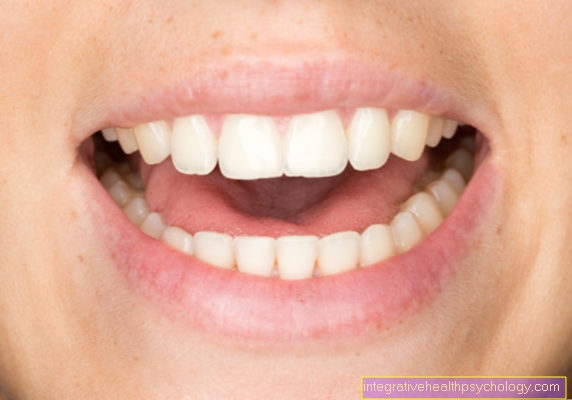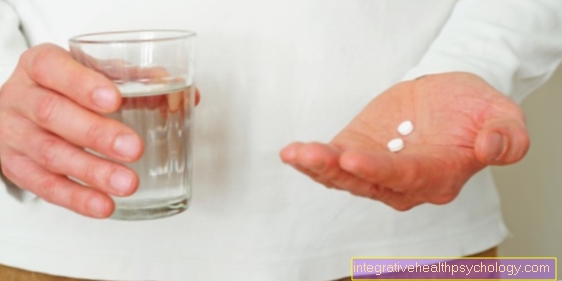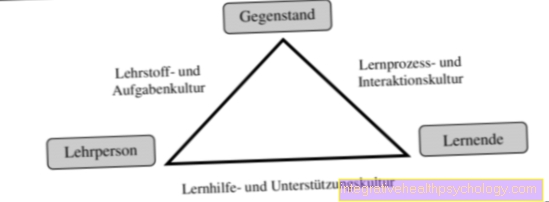These drugs help if you have an allergy
introduction
For drug therapy for allergies, various active ingredients are used that are intended to suppress different components of the allergic reaction. On the one hand, these include antihistamines. They are supposed to prevent the release of the messenger substance histamine, which plays an important role in the reaction of the immune system.
An allergy can also be treated with preparations containing cortisone. To prevent symptoms such as a severe circulatory collapse or shortness of breath, adrenaline and bronchodilators (drugs that widen the airways) are also used in an emergency.

What drug groups are there?
Various groups of drugs are used to treat allergies and are selected depending on the symptoms.
So-called H1 and H2 receptor antagonists are drugs that counteract the messenger substance histamine. The histamine normally docks to the receptors and thereby triggers another reaction of the immune system to the allergen. If this receptor is blocked, the effects of the histamine cannot develop.
Glucocorticoids are also used. These cortisone-containing drugs have an inhibitory effect on the immune system and thereby alleviate the immune response. Spasmolytics are also used, especially for complaints in the gastrointestinal tract. These drugs relieve the cramps in the stomach and intestines. Active ingredients against nausea, so-called anti-emetics, are often helpful. If there is also a systemic reaction to an allergen, allergy sufferers often suffer from shortness of breath because their airways suddenly narrow.
In contrast, drugs such as adrenaline and beta-2 sympathomimetics work. They cause the airways to widen again. In addition, oxygen is usually administered. So-called crystalloid solutions can also be used to stabilize the circulation. They are well suited to get enough fluids back into the circulation.
Read more on the subject at: Therapy of allergy
Mast cell stabilizers
The mast cell stabilizers primarily counteract the release of inflammatory messengers such as histamine. In this way, they intervene in the development of the allergy before the histamine is even released.
Mast cells are among the cells of the immune system that play a role in the development of allergies. When they receive certain signals through messenger substances, they release the histamine, which then conveys the information for the allergic reaction throughout the body.
The mast cell stabilizers act on these mast cells primarily on the cell membrane. By stabilizing this outer skin of the cells, they prevent the substances from being released from inside the cell. They are typically used for hay fever and allergic conjunctivitis. Itching caused by allergies can also be an indication for mast cell stabilizers.
The active ingredients that are currently being prescribed are ketotifen, lodoxamide, cromoglicic acid and nedocromil. Mast cell stabilizing properties are also used in some combination preparations together with antihistamines.
You might also be interested in this topic:
- immune system
- Allergy emergency kit
Antihistamines
The effects of antihistamines are usually based on two different mechanisms. The histamine is released in the body during an allergic reaction and then leads to an excessive reaction of the immune system. In order to break this control loop, the receptors (i.e. the points where the histamine can dock) must be blocked.
That is the main role of antihistamines. It should be noted that there are two different histamine receptors. They are called the H1 and H2 receptors. H1 receptor antagonists that are frequently used are dimetinden and clemastine.
Rantidine in particular acts on the H2 receptor. In the event of an acute allergic reaction, the agents are usually given into the vein. This is the quickest way to work.
They are mainly used for generalized symptoms on the skin such as redness, swelling, wheals and itching.
Cetericine is particularly known as a long-term therapy. This medication is usually taken in the form of tablets and can be taken over a longer period of time to alleviate permanent symptoms, for example in the case of a house dust allergy.
Read more on the subject at: Active ingredients and preparations of antihistamines
Cortisone
Cortisone belongs to the group of so-called glucocorticoids and occurs naturally in the body. These glucocorticoids can affect almost all cells in the human body.
Above all, the anti-inflammatory effect of cortisone is used against allergies.
Cortisone can be used in the form of tablets, creams and ointments, eye and nasal sprays as well as dissolved for administration into the vein. Creams and ointments are usually used for allergy symptoms on the skin, as they can be brought directly to their place of action.
Frequently used cortisone ointments are, for example, FeniHydrocort, which, together with the active ingredient Fenistil, also has an effect against histamine. However, hydrocortisone can also be contained in an ointment as a single active ingredient.
Cortisone tablets usually have to be slowly tapered in and out again, so you must not suddenly start a high dose of the tablets or suddenly stop taking them again. Usually such tablets are used for rheumatic diseases, less often for allergies.
On the other hand, the use of cortisone sprays is more common. These can develop their antiallergic effect in the nose, mouth / or throat. The sprays include beclometasone, budesonide, flunisolide, fluticasone and mometasone sprays.
Also read:
- Effects of cortisone
- Side effect of cortisone
Nasal spray with cortisone
Nasal sprays containing cortisone are said to have an antiallergic and anti-inflammatory effect, especially locally on the nasal mucosa.
They are particularly effective medication for hay fever. Due to the purely local effect, the nasal sprays are much better tolerated than cortisone tablets, but they increase the risk of nosebleeds and sneezing attacks.
Due to their anti-allergic effect, they reduce itching and can also prevent stinging and tearing of the eyes. Beclometasone nasal sprays such as Otri hay fever are usually used. Rhinocort and Nasonex are also typical representatives of the nasal sprays with cortisone.
Read more on the subject below: Nasal spray with cortisone
Eye drops with cortisone
Eye drops containing cortisone are said to have an anti-inflammatory effect. This function is based primarily on the fact that cortisone regulates the development of the immune system's defense cells.
The drops containing cortisone can reduce this production and thus counteract the excessive immune response in allergic reactions. In addition, due to their fluid content, the eye drops have a good effect against itching and burning in the eyes.
Typical representatives of this drug group are prednisolone eye drops such as Pred forte®.
Further information on this: Eye ointment with cortisone
Theophylline
Theophylline is a group of active substances that is mainly used against asthma. This includes both allergic asthma and non-allergic asthma and other diseases that are associated with narrowing of the airways (such as COPD).
Theophylline has a dilating property both on the blood vessels and on the small airways. It also has an anti-inflammatory effect. By widening the airway, symptoms such as shortness of breath in allergic reactions can be alleviated.
However, vasodilation is counterproductive in circulatory shock due to allergic reactions. In addition, the vascular dilatation can lead to digestive problems.
Theophylline can be given as a tablet or as an injection. Typical drugs are the aminophylline and the unifyl. Theophylline tablets can also be given to asthmatics over a longer period of time. Usually, so-called prolonged-release tablets are used for this. These are coated with a certain substance so that they cannot be broken down so quickly by the digestive enzymes.
This ensures that the drugs remain effective for a long time. The infusion into the veins is particularly indicated in the case of an acute asthma attack with severe dyspnea, since the dilation of the airways and blood vessels contribute to a better oxygen supply.
Read more on the subject at: Theophylline
Montelukast
Montelukast is a drug belonging to the group of leukotriene receptor antagonists. Leukotrienes are messenger substances that, in addition to histamine, also play an important role in mediating the allergic reaction in the immune system.
Montelukast works primarily in the bronchi, i.e. the smallest airways, where it blocks the binding of the messenger substance leukotriene to its receptor (i.e. the docking point). Montelukast is particularly popular with children because it does not have a particularly strong effect and therefore has few side effects and is approved from six months.
As a rule, it is prescribed in addition to sprays containing cortisone, as the mechanisms of action of the two drug groups complement each other ideally. Montelukast is used in the drugs Singulair and Montelubronch.
Some side effects were observed after the drug was approved. However, an actual connection with the medication has not been proven for all side effects. The adverse effects observed include an increased tendency to bleed, psychological symptoms such as hallucinations, tremors, anxiety, irritability. Dizziness and tiredness could also be observed. As well as symptoms in the gastrointestinal tract, which include nausea, vomiting, and diarrhea.
Beta-2 sympathomimetics
Our vegetative nervous system, i.e. the nervous system, which primarily influences the internal body functions, is divided into two subclasses.
One is the parasympathetic nervous system, which plays an important role in digestion and shuts down many other body functions such as the cardiovascular system. The sympathetic, on the other hand, has a more activating effect, stimulates breathing and circulation. Sympathomimetics are drugs that support the sympathetic nervous system. They emit messenger substances that activate the sympathetic nervous system.
Beta-2 sympathomimetics work on the beta-2 receptors, which are mainly located in the blood vessels and the bronchi (our smallest airways) and lead to an expansion of the structures there. In the event of an allergic reaction, the bronchodilating effect is mainly used. The beta-2 sympathomimetics can be divided into short-acting and long-acting drugs. Depending on the severity of the allergy, long-term therapy with a combination of these beta-2 sympathomimetics can be used.
The short-acting sympathomimetics include salbutamol, terbutaline, fenoterol and isoprenaline. Long-acting beta-2 sympathomimetics are formoterol and salmeterol. The sympathomimetics are usually used in the form of sprays, so that they get into the lungs as quickly as possible and only develop their effect locally. Side effects can include tremors and restlessness as well as a too fast heartbeat and cardiac arrhythmias.
You may also be interested in this topic: Medicines for asthma
Anticholinergics
Anticholinergics have a similar spectrum of activity as the sympathomimetics, but they start at exactly the opposite point. The sympathetic nervous system (activating) and the parasympathetic nervous system (digestion and rest) are antagonists in our body that primarily control our internal body functions.
While sympathomimetics help activate the sympathetic nervous system, anticholinergic drugs shut down the parasympathetic nervous system. The result is a similar effect.
Anticholinergics work by blocking the messenger receptors in the parasympathetic nervous system so that no signals can be sent through the affected nerves. For example, this reduces the tension in the small muscles that are located in the vessel walls and around our airways. Above all, the bronchi, our smallest airways, can expand again. The heart rate is also increased. Anticholinergics play a role especially in COPD, where they are supposed to widen the bronchi in the long term, they have the same function in the therapy of allergic narrowing of the bronchi.
Typical representatives of the anticholinergics are the poison of deadly nightshade (atropine) and butylscopolamine. Ipratropium bromide and aclidinium are also anticholinergic drugs. Since the parasympathetic nervous system also plays a role in saliva production, undesirable side effects such as dry mouth can occur.
Also read: Emergency spray for asthma
Anti IgE
IgE is an antibody that plays a major role in mediating allergic reactions in the body.
This IgE antibody is normally firmly bound to immune cells. If, however, he encounters a substance to which the body is allergic, the IgE antibody detaches from the immune cell and instead attaches itself to the allergen. This process triggers a reaction in the immune cell that releases various messenger substances.
The whole immune system is alerted and begins to fight the potentially harmful substance. In the case of an allergy, however, the body does not react as usual to a harmful substance. Instead, the IgE antibody falsely recognizes the allergen as being worth fighting. This creates an excessive reaction of the immune system to an actually harmless substance.
Since the whole immune chain is triggered by the function of the IgE antibody, treatment with drugs that counteract the IgE is a logical consequence. However, no drug has yet been developed that only inhibits the allergy-causing IgEs. Instead, the anti-IgE acts on all IgE antibodies and thus also weakens the normal function of the immune system. The anti-IgE is therefore only used if an allergy cannot be controlled well with the usual medication.
The anti-IgE omalizumab has been on the market since 2005 and is now even approved for children from 6 years of age and is often used as a supplement to hyposensitization.
Similar topics: Medicines for hay fever
Desensitization
Desensitization is a therapy that aims to slowly get the body used to a substance to which it is allergic.
The idea behind this treatment is that the allergen is given in minimal doses. The dose is so small that it will not cause a severe allergic reaction. Nevertheless, the body reacts to the substance. Usually a dose of the allergen is given every two to four weeks and the amount increases over time.
In this way, the body gradually gets used to the allergen without reacting to it with an allergic shock. The method is particularly effective in case of allergies to various pollen and grasses. Even with insect venom, the desensitization usually works reliably. It is more difficult with some foods and contact allergies, these can rarely be treated by desensitization.
After administering the hyposensitizing dose, an allergic reaction does not occur, but the body's immune system begins to work. It fights the allergen as if it were a pathogen. This is why treated people usually feel sick, limp and feverish for a few days.
Home remedies for allergies
Home remedies play a role in the therapy of allergies, especially when annoying symptoms are to be alleviated.
They do not represent a causal treatment. However, symptoms such as itching of the skin, burning or watery eyes and a runny nose can usually be treated very well with home remedies. Medication does not always have to be used immediately.
Plants that are used as home remedies for colds can also provide relief from allergies. Honey, ginger and nettle tea have an anti-inflammatory effect, while at the same time they can soothe irritated mucous membranes.
Sea salt added to the bath and horsetail can help relieve a rash. The sea salt also has a positive effect on a runny nose. Pouches with apple cider vinegar can be used against the itching and burning sensation on the skin.
Even if such home remedies can significantly alleviate the symptoms in many cases, medication should not be avoided in the event of an allergic shock. Such an anaphylactic shock is an absolute emergency that quickly becomes life-threatening and can be fatal. Therefore, if an allergic shock is suspected, the emergency kit should be used and an emergency doctor should be called.

.jpg)

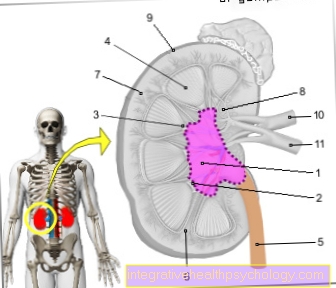

.jpg)
